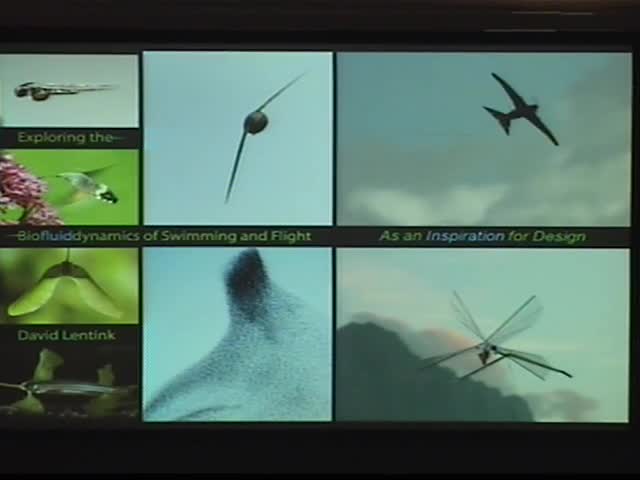Leading-edge vortices elevate lift of autorotating plant seeds
Presenter
June 3, 2010
Abstract
Joint work with W. B. Dickson2, J. L. van
Leeuwen1, and M. H. Dickinson2.
As they descend, the autorotating seeds of maples and some
other trees generate unexpectedly high lift, but how they
attain this elevated
performance is unknown. To elucidate the mechanisms
responsible, we measured the three-dimensional flow around
dynamically scaled models of maple and hornbeam seeds. Our
results indicate that these seeds attain high lift by
generating a stable leading-edge vortex (LEV) as they descend.
The compact LEV, which we verified on real specimens, allows
maple seeds to remain in the air more effectively than do a
variety of nonautorotating seeds. LEVs also explain the high
lift generated by hovering insects, bats, and possibly birds,
suggesting that the use of LEVs represents a convergent
aerodynamic solution in the evolution of flight performance in
both animals and plants.
1 Experimental Zoology Group, Wageningen University, 6709 PG
Wageningen, Netherlands.
2 Bioengineering and Biology, California Institute of
Technology, Pasadena, CA 91125, USA.
Science 12 June 2009:
Vol. 324. no. 5933, pp. 1438 - 1440
DOI: 10.1126/science.1174196
http://www.sciencemag.org/cgi/content/abstract/324/5933/1438
